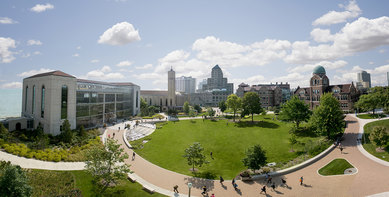A Transformative Decade
How Loyola University Chicago Reenergized Their Entire Institution
Faced with declining enrollments and growing fiscal challenges, many U.S. private universities are struggling to rejuvenate their institutional identity and brand. This can be especially difficult for institutions in urban settings, where opportunities for growth are limited and city regulations and infrastructure demands present unique challenges.
In the recent Private University Products and News magazine article, “A Transformative Decade: How Loyola University Chicago’s rejuvenated urban campus reenergized the entire institution,” campus planning and design leaders Patrick Brawley and Doug Kozma, analyze how Loyola University used a physical framework plan to foster dramatic and inspiring change in only 10 years’ time. Not just changes to the physical campus either, but changes to their curriculum, their relationship with the community, the environment, their reputation, and their bottom line.
With its stated mission of expanding knowledge in service of humanity, Loyola University, clearly could not thrive while remaining cut off from the surrounding community by cement walls and dangerous traffic infrastructure. They also could not live up to their ambitious ideal of cura personalis—caring for the whole person—while their campus core was centered around parking rather than students, and rainwater runoff from its impervious surfaces taxed natural resources at the rate of 6 million gallons annually.
The general principles that Loyola employed on their Chicago Lake Shore campus form a thought- provoking checklist for other institutions to consider.
- Focus on sustainability as a way to further institutional mission
- Commit to placemaking as a key part of institutional identity
- Upgrade infrastructure in ways that express institutional values
- Partner with the city and adjacent neighborhoods
- Advance improvements that also benefit the surrounding community
- Engage your alumni in the transformation
- Communicate and celebrate the changes
Loyola University Chicago’s transformation from disjointed and struggling to an inviting and thriving urban campus that embodies their mission demonstrates the transformative power of these principles put to work.
You can read the full article here.
Photo credits: Loyola University Chicago

